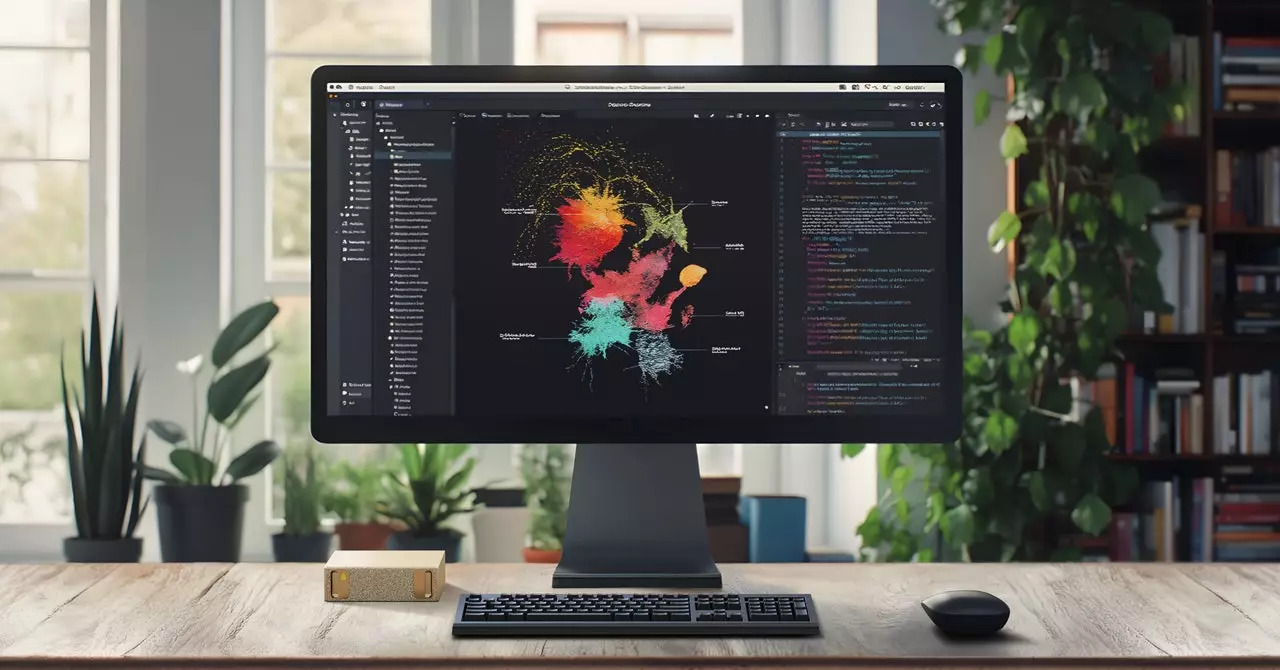Innovation in technology continues to evolve rapidly, and artificial intelligence (AI) is at the forefront of this evolution. Among the major players in the AI hardware market, Nvidia has dominated due to its proficient manufacturing of advanced computer chips. As the interest in open-source AI solutions grows, Nvidia has announced a revolutionary new product aimed at consumers: the “Digits,” a personal AI supercomputer set for release in May, priced at $3,000. This move reflects Nvidia’s acute awareness of changing market demands and engagement with a burgeoning community of AI enthusiasts and developers.
Nvidia’s Digits is a compact desktop machine roughly the same size as a small book, designed to bring powerful AI capabilities directly into the hands of developers, researchers, and hobbyists. The system is powered by Nvidia’s proprietary GB10 Grace Blackwell “superchip,” specifically optimized for the intensive computational tasks involved in AI model training and execution. With 128 gigabytes of unified memory and up to 4 terabytes of NVMe storage, Digits is engineered to efficiently process large-scale AI applications, facilitating the discovery and experimentation of complex models at home.
Nvidia’s CEO, Jensen Huang, articulated the vision behind Digits during his keynote at CES, emphasizing that this technology equips aspiring data scientists and researchers with the tools they need to contribute actively to the rapidly evolving field of AI. The ambition is clear: by democratizing access to powerful computational resources, Nvidia seeks to inspire innovation and creativity amongst a wider range of users.
What sets Nvidia’s Digits apart is its ability to run significant AI models, boasting the capability to handle a single large language model containing up to 200 billion parameters. This complexity rating points toward its potential to rival sophisticated models like OpenAI’s GPT-4 and Google’s Gemini, albeit on a different scale. In the current landscape, such performance typically requires renting resources from cloud service providers or investing in custom-built systems with multiple chips. The introduction of Digits simplifies this process, making advanced AI experimentation more accessible.
Furthermore, when two Digits units are networked through Nvidia’s proprietary high-speed interconnect link, they can accommodate systems even more robust than standalone configurations, such as Meta’s open-source Llama model with 405 billion parameters. This interconnectedness illustrates a significant shift towards collaborative AI modeling among researchers and enthusiasts, breaking down barriers to entry in a space often dominated by enterprise-level solutions.
Nvidia’s move also reflects a critical shift in the AI landscape, where open-source and grassroots projects are gaining momentum. Traditional computing giants have often monopolized powerful models due to their infrastructure and vast resources; however, the rise of home-based supercomputers like Digits paves the way for increased community engagement. This transition could empower smaller organizations and individual developers to explore AI applications that were once exclusively within the reach of major corporations, thus sparking innovation from unexpected sources and allowing for diverse, decentralized AI development.
While Nvidia’s Digits presents an attractive proposition for those keen to deepen their understanding of AI technologies, it is essential to recognize the limitations compared to high-end systems housed in corporate data centers. The top-tier versions of proprietary AI models maintained by entities like Microsoft and Google will, quite naturally, continue to present greater computational power and resources. However, the emergence of Digits fosters a unique environment where creativity and experimentation can flourish, free from the confines of more traditional systems.
As digital landscapes evolve and AI expands its reach, Nvidia’s Digits marks a pivotal moment. By placing high-end computing capabilities directly into consumer markets, the company breaks down the barriers dictating who has access to state-of-the-art AI technology. With the price point set at $3,000, Digits is neither the cheapest option nor the most powerful, but it embodies a shift towards empowering average individuals to participate in the next chapter of artificial intelligence.
Nvidia’s commitment to developing accessible AI solutions through products like Digits signifies a promising future for a diverse group of innovators, from students to enthusiasts. In an age where AI is increasingly relevant to both personal and professional spheres, initiatives like Digits open doors to new opportunities for learning, exploration, and creation—heralding an era where every desk could potentially serve as the birthplace of the next groundbreaking AI innovation.

